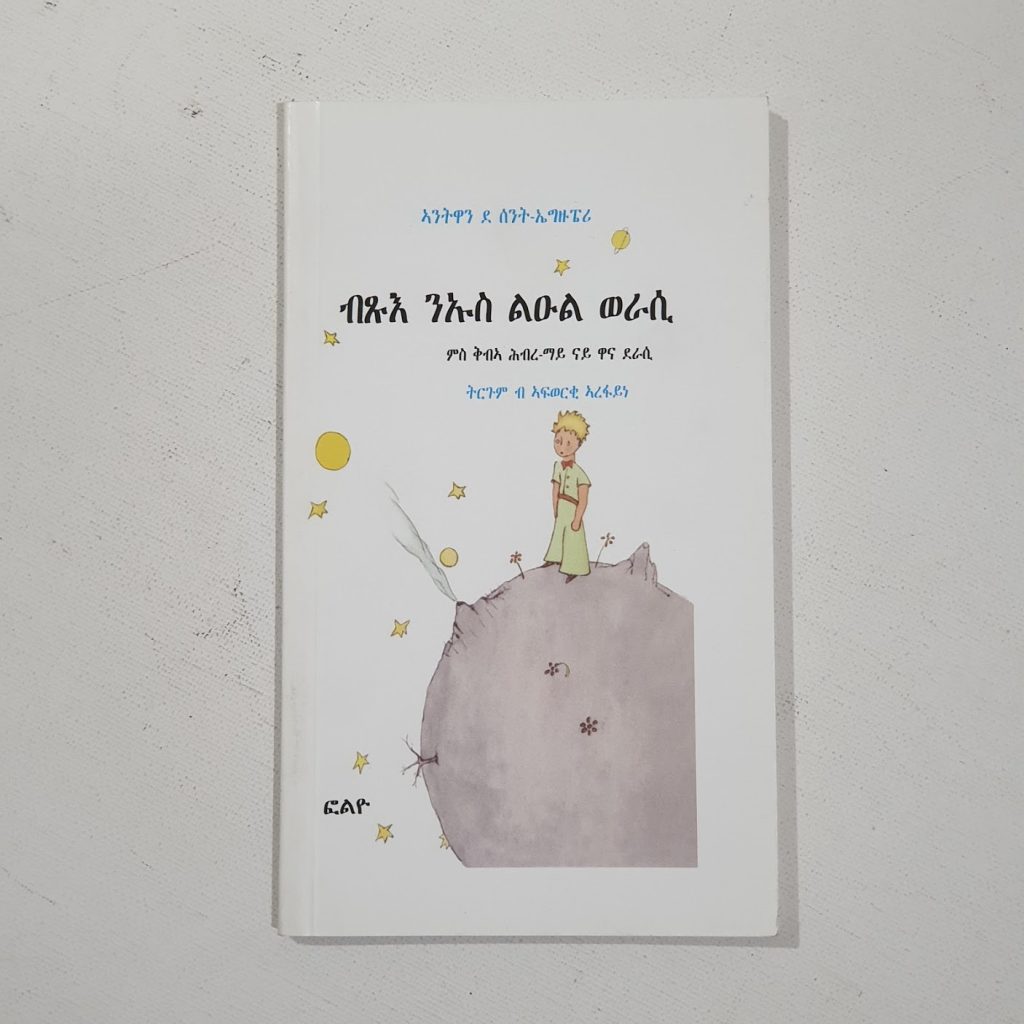
ብጹእ ንኡስ ልዑል ወራሲ / Basu’a Na’usa La’ul Warasi — in Tigrinya.
Tigrinya / Tigrigna / ትግርኛ is a Semitic language spoken predominantly in Eritrea and the Tigray region of Ethiopia. It is one of the Ethio-Semitic languages, which are part of the larger Afro-Asiatic language family. With millions of speakers, Tigrinya serves as one of the working languages of Eritrea, where it is used in government and public life, as well as one of the official languages of the Tigray region in Ethiopia.
Tigrinya has its roots in the Ge’ez language. The transition from Ge’ez to Tigrinya reflects a broader linguistic evolution similar to that of other Semitic languages in the region, such as Amharic.
Tigrinya has a rich phonetic inventory that includes seven vowel sounds that can be short or long, affecting word meaning. Its consonant sounds include ejective consonants, which are characteristic of Ethiopian Semitic languages. The typical syllable structure in Tigrinya follows a consonant-vowel pattern, which is common among Semitic languages.
Tigrinya is an agglutinative language, forming words by combining a root with various affixes to convey different grammatical meanings such as tense, aspect, mood, and person for verbs, and pluralisation or definiteness for nouns. Tigrinya nouns are marked for definiteness, and while they do not have a case system similar to languages like German or Russian, they show gender (masculine or feminine) and number (singular or plural). The verb system in Tigrinya is complex, with verbs derived from Semitic roots consisting of three consonants. Verbs are inflected for various grammatical categories, including tense, aspect, mood, and voice, through changes to the root and the addition of prefixes and suffixes.
Tigrinya is written in the Ge’ez script (also known as the Ethiopic script), an abugida where each character represents a consonant with an inherent vowel. Different vowels are indicated by modifying the base character. The script is written from left to right and is shared with other languages in the region, including Amharic and Ge’ez.
Tigrinya’s vocabulary includes a significant number of loanwords from Ge’ez, reflecting its historical roots. Additionally, it has absorbed terms from other languages, including Italian and English, due to colonial history and modern influences. Despite these borrowings, the core vocabulary of Tigrinya remains Semitic.
In Eritrea, Tigrinya is used in official communications, education, and media, playing a crucial role in public and private life. In Ethiopia, it is one of the languages of administration and education in the Tigray region. There are noticeable dialectical variations in Tigrinya speech across different regions in Eritrea and Ethiopia, influenced by factors such as geography, social class, and education. However, the standard dialect based on the speech of Asmara (the capital of Eritrea) is widely understood and used in media and formal education.


